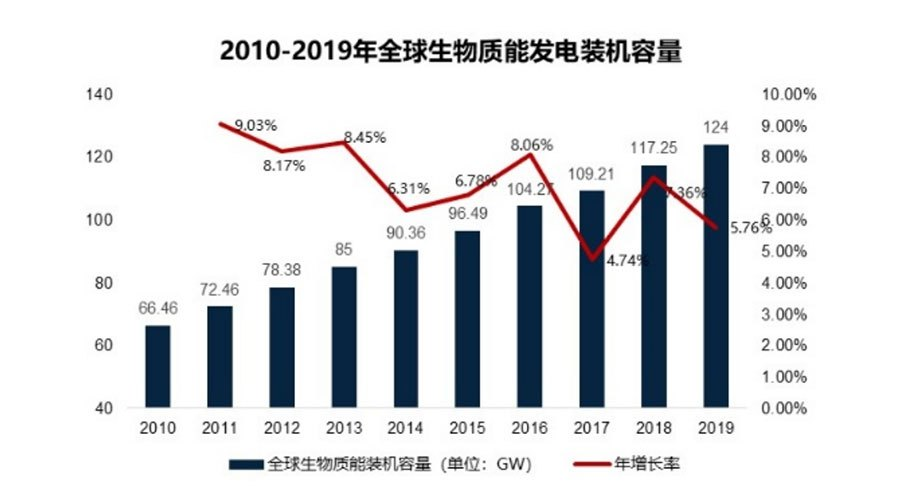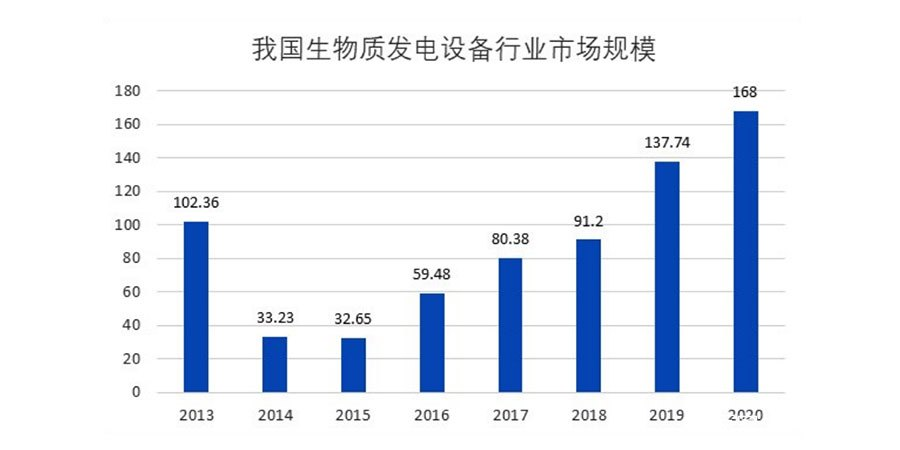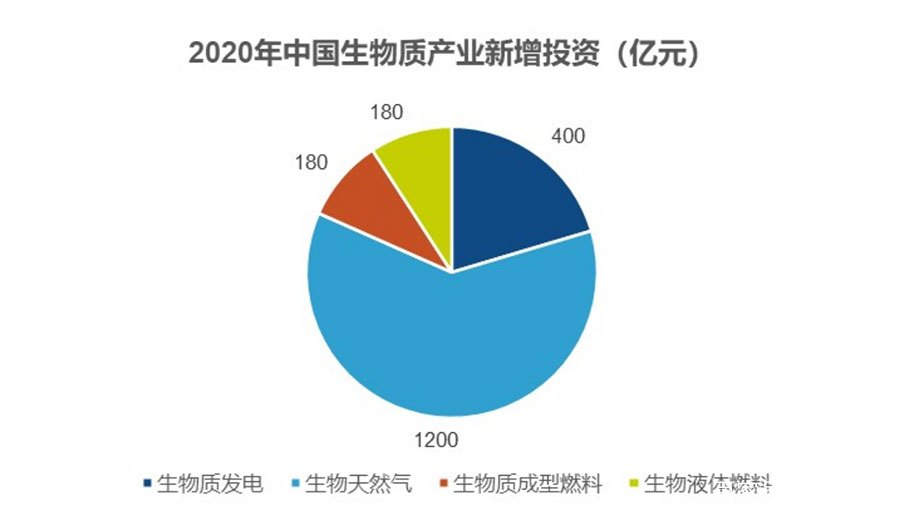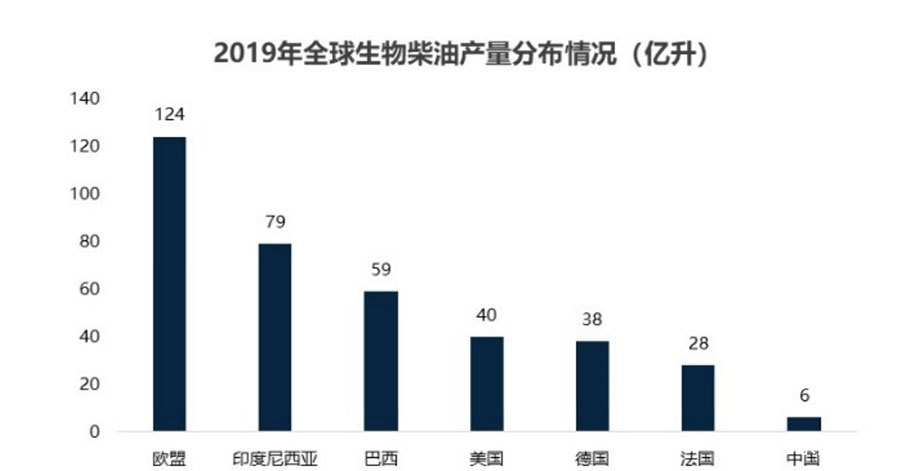Carbon Neutrality: The value and Opportunity of biomass energy industry development
- Categories:Industry News
- Author:東灘智庫
- Origin:北極星環保網
- Time of issue:2021-11-11 13:53
- Views:
(Summary description)
Carbon Neutrality: The value and Opportunity of biomass energy industry development
(Summary description)
- Categories:Industry News
- Author:東灘智庫
- Origin:北極星環保網
- Time of issue:2021-11-11 13:53
- Views:
Information
Biomass energy belongs to zero-carbon fuel, the carbon fuel comes from the atmosphere, after burning, and then returns to the atmosphere.In terms of electricity generation alone, biomass accounts for a very low share of new energy, but it is a considerable amount to add to that.Biomass Energy will play an important role in the future low-carbon energy structure. European countries regard biomass energy as an important part of low-carbon energy.Relatively speaking, the utilization of biomass energy in China is relatively insufficient, and there is still a large space for development in the future.
I. Mode of Utilization of biomass energy
Biomass energy mainly refers to the direct or indirect use of natural energy production of organic materials, with large reserves, universality, accessibility, high volatility, high carbon activity, flammability and so on, the main forms are agricultural products and agricultural and forestry waste, domestic waste, industrial organic waste and so on. There are four main modes of biomass energy utilization.
SOLID UTILIZATION:It can be divided into three forms: wet forming, hot forming and carbonization forming:Wet compression molding process is mainly the raw material soaking, degradation, extrusion moisture, and then molding into fuel blocks;The hot press forming process mainly includes raw material crushing, drying and mixing, extrusion forming and cooling packaging;Carbonization molding is the raw material compression, pyrolytic carbonization, to get the product.
LIQUID CONVERSION MODE:There are mainly fermentation technology, biomass liquefaction and mechanical extraction technology.The fermentation process crushes, catalyzes, ferments, condenses and condenses the biomass to obtain the liquid ethanol;Biomass liquefaction fuel is obtained from waste biomass as raw material by thermochemical liquefaction process;Some of the most oil-rich energy crops go directly through liquid fuels that can be made mechanically.
GAS CONVERSION AND UTILIZATION:There are two main methods: biochemical method and thermochemical method.Biochemical production of combustible gas mainly refers to the bacteria will be raw material decomposition, conversion into fatty acids, anaerobic digestion process to produce biogas;Retorting under the condition of high temperature and anoxic by thermochemical method, the gas product is “Furnace gas”, the solid material can be cracked again, then high quality gas fuel can be produced.
BIOMASS POWER GENERATION:The generation of electricity using biomass energy, which is possessed by biomass, is one kind of renewable energy generation, it includes direct combustion of agricultural and forestry wastes, gasification of agricultural and forestry wastes, waste incineration, landfill gas and biogas.Agricultural and forestry biomass power generation technology can be divided into direct combustion power generation and mixed combustion power generation.
II、 Significance of developing biomass energy
The utilization of biomass energy in our country starts late, the utilization way is simple, the efficiency is low, the development is more environmental protection, the high efficiency combustion technology, to our country urban and rural area living standard enhancement as well as the environmental improvement, all has the profound significance.
1. Reduce the use of fossil fuels
Biomass fuel ethanol and biodiesel can partly replace gasoline and diesel, thus reducing oil consumption and oil import dependence;Biomass briquettes can replace coal use, biomass power supply can reduce coal use of thermal power generation, both can save a lot of coal resources;The popularization and use of biogas can solve the problem of fuel source for residents’living.
2. Reduce greenhouse gas emissions
Biomass energy is a clean energy, the content of harmful substances (sulfur and Ash) in biomass energy is only about 1/10 of coal.At the same time, the emission and absorption of carbon dioxide from biomass energy constitute the natural carbon cycle, and its energy use can achieve zero carbon dioxide emissions.
3. Improve people’s living conditions
Biomass energy uses crop Straw to produce Biomass BRIQUETTES, livestock waste to produce biogas, industrial organic waste water and other waste to produce industrial biogas and power, it avoids the air pollution, the spread of germs, the pollution of drinking water and municipal solid waste, and improves the living environment.
III. Steady development of the biomass energy industry market
Steady increase in global biomass installed capacity:With the active support and promotion of biomass power generation projects by all countries in the world, the global biomass power generation has developed rapidly and the installed capacity of biomass energy has steadily increased.According to the IRENA data report, in 2019, the global installed capacity of renewable energy power generation reached 2537 Gw, of which 124 gw, or 4.9% , were biomass power generation.

China’s biomass power generation industry has been accelerating the overall development trend.By the end of 2020,1,353 biomass power generation projects had been put into operation nationwide, adding 5.43 million kilowatts of biomass power generation, bringing the total installed capacity to 29.25 million kilowatts, an increase of 30.97 percent year-on-year, according to the National Energy .Administration.Biomass power generation is steadily increasing year by year, reaching 132.6 billion kwh by the end of 2020.
By the end of 2020, China had installed 29.624 million kilowatts of biomass power on the grid, according to statistics from the National Energy Administration.Of this total, 15.364 million kilowatts are generated by waste incineration, 13.388 million kilowatts by agricultural and forestry biomass, and 872,000 kilowatts by biogas. By region, in 2020, the installed capacity of biomass power generation in Shandong, Guangdong, Zhejiang, Jiangsu and Anhui provinces exceeded 2 million kilowatts, accounting for 46.6 percent of the country’s cumulative grid-connected capacity.
At present, the annual production of the main biomass resources in China is about 3.494 billion tons, and the utilization of energy is about 461 million tons.There is still room for further development in the future.By 2030, the total installed capacity of biomass power generation in China is expected to reach 52 million kilowatts, providing more than 330 billion kilowatt hours of clean electricity and reducing carbon emissions by more than 230 million tons.By 2060, the total installed capacity of biomass power generation in China will reach 100 million kilowatts, providing more than 660 billion kilowatt hours of clean electricity and reducing carbon emissions by more than 460 million tons.
IV、Industrial Chain of biomass power generation industry
The distribution of biomass fuel is regional, dispersed and limited. The amount and price of agricultural and forestry wastes are important factors to determine the benefit of biomass power plants.The investment enthusiasm of biomass power generation is rising rapidly. Various power generation projects of agricultural and forestry wastes have been started. The installed capacity and power generation capacity of biomass power generation are increasing steadily in China.

1. Biomass power generation project operation
In recent years, the installed capacity of refuse incineration has increased rapidly, with a compound growth rate of 26.9% from 2015 to 2020.Waste Incineration Project investment in the early stage of more funds, the project construction cycle is generally about 2 years, the recovery period is generally 5-10 years, the central and local give more subsidies funds.The operating income of waste incineration mainly comes from the electricity charge for the network (collected from the power grid) and the garbage disposal fee (collected from the government) . The electricity charge for the network generally accounts for 70-80% , and the garbage disposal fee 20-30% .
At present, biomass power generation projects rely heavily on government subsidies. From the perspective of future development, the government’s fine operation requirements for projects are constantly increasing, and the central subsidy will probably gradually withdraw.Taking into account the steady growth of the urban domestic waste transportation volume in our country, waste incineration and power generation will become a just need for the harmless treatment of domestic waste in the future, waste-to-energy power generation enterprises can relieve the pressure of competitive allocation by improving operation efficiency and raising treatment cost.
2、Biomass power generation equipment industry
The demand scale of biomass power generation equipment in China shows great variability,In 2013, the market scale of biomass power generation equipment in China was 10.236 billion yuan. In 2014, the market scale of biomass power generation equipment decreased to 3.325 billion yuan.With the industrial integration and policy norms, domestic biomass power generation equipment scale gradually pick up, in 2020 waste incineration power generation equipment market size of about 16.8 billion yuan.

The industrial chain of biomass power generating equipment mainly includes biomass electric generator, biomass granulation equipment, specialized boilers and generators, incineration boilers, etc. ,Incinerator, as the core equipment of waste incineration system, the domestic waste incinerator which is widely used and mature in technology at home and abroad, mainly includes grate incinerator, fluidized bed incinerator and so on.At present, there are 26 listed biomass-related enterprises in China.Due to technical constraints, the demand for biomass power generation equipment has not yet been fully opened.With the increasing attention to biomass power generation, the application of biomass power generation equipment will be more and more demand, the future biomass power generation equipment market scale continued to rise.
V、There are great opportunities in the biomass fuel industry
1. Investment in the bio-natural gas industry increased rapidly
China’s biomass energy industry will see an additional investment of about 196 billion yuan in 2020.Of this total, about 40 billion yuan will be invested in biomass power generation, 120 billion yuan in natural gas, 18 billion yuan in Biomass briquettes and 18 billion yuan in liquid biofuel.The National “Guiding opinions on promoting the development of bio-natural gas industry”proposed that by 2025, the annual output of bio-natural gas would exceed 10 billion cubic meters; by 2030, the annual output of bio-natural gas would exceed 20 billion cubic meters.

Supporting facilities for bio-natural gas include storage and transportation of raw materials, pretreatment, fermentation and transformation, purification, transportation of fuel gas and fertilizer, etc. , natural gas products, equipment, service system and other links to form an industrial chain is gradually, once the industrial chain is fully opened, the entire market is expected to be more than one trillion yuan.

2. There are opportunities for the development of biodiesel and other industries
China’s biodiesel industry is still in the early stage of development, most of the small-scale enterprises in the industry.According to the regional distribution of global production, the 28 EU countries produced 12.4 billion litres of biodiesel in 2019, while Indonesia and Brazil produced more than 5 billion litres, By comparison, China’s output is only 600m litres and there is plenty of room for growth.

3. Continuous Development and upgrading of biomass energy technologies
Fuel ethanol as an example, its technology from the first generation to the second generation of transition, the third generation of technology has been gestating.The first generation of fuel ethanol is the main technology for the commercial production of fuel ethanol at home and abroad.The second generation Cellulosic ethanol is the future of the biofuel ethanol industry, but there are still bottlenecks such as low pretreatment efficiency and high cost of cellulase.The third generation of microalgae fuel ethanol technology represents a more advanced research direction, the technology route has high photosynthetic efficiency, short production cycle, absorption of atmospheric CO2 and other significant advantages, is currently in the initial stage of research and development.
Scan the QR code to read on your phone
Previous:
None





